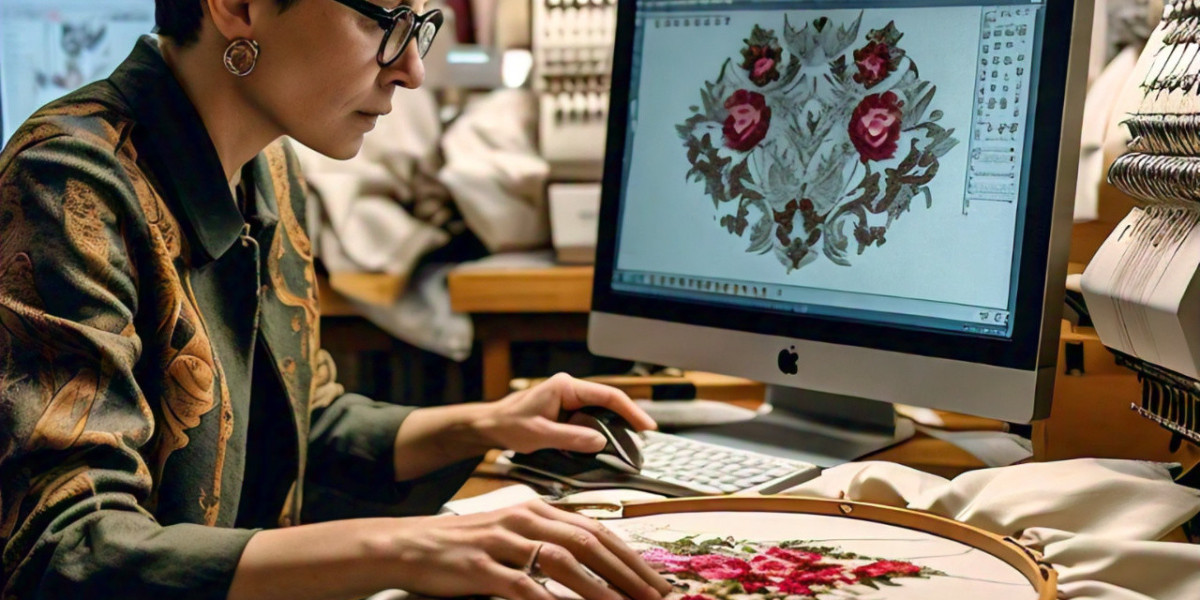You've got an amazing logo or design you want embroidered, but when you try to stitch it out, something goes wrong. The edges look jagged, the fabric puckers, or the details get lost. What's missing? A professional embroidery digitizer – the unsung hero who transforms your artwork into flawless stitch files.
In this guide, we'll pull back the curtain on what digitizers actually do, why their expertise matters, and when it's worth hiring one instead of going the DIY route.
What Exactly Does an Embroidery Digitizer Do?
Professional digitizers are like translators who convert your visual design into language embroidery machines understand. But there's way more to it than just running an image through software.
The Digitizing Process Step-by-Step:
Design Analysis
- Examines your artwork's shapes, colors, and details
- Identifies potential stitching challenges
- Recommends simplifications if needed
Stitch Mapping
- Determines stitch types (satin, fill, running) for each element
- Plans stitch direction and density
- Creates underlay stitches for stability
Technical Optimization
- Adds pull compensation to prevent distortion
- Sequences stitches for efficient production
- Adjusts for specific fabrics and garments
Quality Testing
- Sews out sample on actual material
- Makes micro-adjustments to tension and density
- Verifies design works at different sizes
"Think of us as bridge builders," says veteran digitizer Maria Chen. "We create the path that lets your design cross safely from digital file to physical embroidery."
The Hidden Skills Behind Professional Digitizing
1. Fabric Whispering
Professional digitizers understand how different materials behave:
Fabric Type | Special Considerations |
Stretchy knits | Extra underlay, looser density |
Thick denim | Stronger pull compensation |
Delicate silks | Lighter stitch patterns |
Towels | Reduced density, topping layer |
2. Stitch Engineering
They choose the perfect stitch type for each element:
- Satin stitches for crisp borders and text
- Fill stitches for large color blocks
- Running stitches for fine details
- Tackdown stitches to secure tricky areas
3. Problem Prevention
Pros anticipate and solve issues before they happen:
✔ Prevents thread breaks with optimal density
✔ Avoids puckering through smart underlay
✔ Maintains detail clarity at small sizes
✔ Ensures color changes happen logically
Why Professional Digitizing Beats DIY Software
While DIY digitizing tools exist, here's why pros deliver better results:
Factor | DIY Software | Professional Digitizer |
Accuracy | Generic settings | Customized for your design |
Quality | Often needs tweaks | Production-ready files |
Time | Hours of trial/error | Fast turnaround |
Complexity | Limited capabilities | Handles intricate designs |
Cost | Software purchase | Pay-per-design efficiency |
When You Definitely Need a Professional
These scenarios call for expert digitizing:
1. Branding & Business Use
- Company logos for uniforms
- Merchandise for sale
- Promotional products
Why it matters: Poor quality embroidery damages your brand image
2. Complex Designs
- Photorealistic portraits
- Detailed illustrations
- Small text (under ¼ inch)
Why it matters: Amateur digitizing loses crucial details
3. Specialty Materials
- Stretchy athletic wear
- Leather or vinyl
- Unusual fabrics like mesh
Why it matters: Different fabrics require unique settings
4. Production Runs
- Bulk orders of 50+ items
- Consistent quality across items
- Tight deadlines
Why it matters: Errors multiply in large quantities
How to Spot a True Professional
Look for these hallmarks of quality digitizers:
✅ Provides stitch-out samples with orders
✅ Asks detailed questions about your project
✅ Offers revision options
✅ Explains their process clearly
✅ Has portfolio with varied fabric examples
Red flags:
❌ "Instant digitizing" with no human review
❌ No option for test sew-outs
❌ One-size-fits-all pricing
The Cost vs. Value Equation
Professional digitizing typically costs:
- Simple logos: 15−15−35
- Medium complexity: 35−35−75
- Highly detailed designs: 75−75−150
While this seems pricey compared to $5 automated services, consider:
- Material savings: Proper digitizing prevents wasted fabric
- Time savings: No endless tweaking of DIY files
- Quality assurance: Looks professional from first stitch
Finding Your Perfect Digitizer
Top places to look:
- Specialized Studios (Best for complex projects)
- Freelance Platforms (Upwork, Fiverr - vet carefully)
- Embroidery Forums (Get recommendations)
- Local Shops (Good for fabric-specific advice)
Pro tip: Start with one small test design before committing to large orders.
The Future of Professional Digitizing
Even as AI advances, human digitizers remain essential for:
- Creative problem solving
- Artistic judgment calls
- Custom fabric adaptations
- Quality control
"The machines are getting smarter, but they still need skilled human pilots," explains industry trainer Lisa Park.
Your Next Steps
- Gather your artwork (vector files preferred)
- Note your fabric/garment type
- Research 2-3 digitizers
- Order a test file
- Compare stitch-out results
Professional digitizing might seem like an extra step, but it's the secret weapon that turns good embroidery into greatness. Whether you're embroidering 10 polos or 1,000 hats, investing in expert digitizing pays off in quality, savings, and peace of mind.
Ready to upgrade your embroidery results? Your perfect digitizer is out there – now you know exactly how to find them and why they're worth it.



